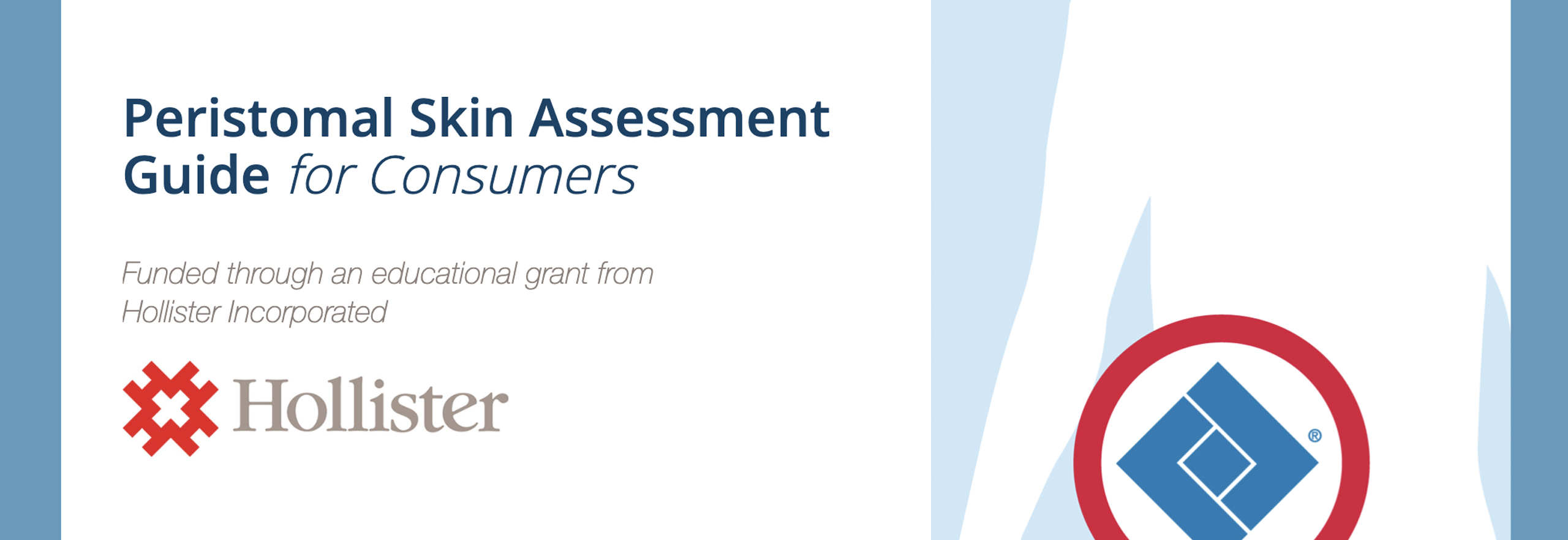What is the Peristomal Skin Assessment Guide for Consumers and Who Can Benefit From It?
How to use the Peristomal Skin Assessment Guide for Consumers to improve and maintain your peristomal skin health.
For individuals living with an ostomy, an opening in the abdomen created for the body to eliminate waste, ensuring you know how to check skin for problems is a proactive way to maintain good health. The Wound, Ostomy, and Continence Nurses Society™ (WOCN®) is an international nursing society of experts in the care for patients with wound, ostomy and incontinence. With over 5,000 health care professionals, the WOCN Society’s mission is to provide dedicated care and advice through advocacy, education and research for its members. One of the key resources available through the Society is the Peristomal Skin Assessment Guide for Consumers.
The Peristomal Skin Assessment Guide for Consumers is a free online guide for individuals living with an ostomy. The guide is designed to help people with an ostomy understand and identify common skin problems that may occur as a result of having an ostomy. With an overview of next steps in skin care management and prompts individuals to seek further medical attention from a wound, ostomy and continence (WOC) nurse, this guide empowers people with an ostomy to be proactive about their health.
There are two key words that people with an ostomy need to understand – ostomy and stoma. An ostomy is a surgically created opening in a person’s abdomen. A stoma is the end of the intestine that is brought to the surface of the abdomen during the surgical procedure. Typically, a bag or pouch is worn over the stoma to collect bodily waste.
After an ostomy procedure is completed, there are several complications that can occur including:
- skin irritation – irritation around the adhesive on the ostomy appliance.
- dehydration – if a lot of waste exits through the stoma each day dehydration can occur.
- leakage – if the appliance isn’t fitted properly, leakage can occur.
- bowel obstruction – if you don’t properly chew your food, blockages can occur in the intestine.
- retraction – the stoma can move inward if weight gain occurs or scar tissue grows.
- parastomal hernia – this occurs when the intestine presses outwards through the ostomy.
- necrosis – this is tissue death that can occur in the days following surgery to install the ostomy.
If you suspect you may be experiencing some of the complications listed above, you can use the Peristomal Skin Assessment Guide for Consumers to assess your condition before seeking further medical support. There are four steps outlined in the Peristomal Skin Assessment Guide for Consumers:
- Remove your pouching system.
- Look at your skin and stoma in both sitting and lying positions.
- Answer a series of questions, choosing the answer that best matches what you see.
- Follow the instructions in the guide.
The questions in the guide are focused on the location and color of the skin damage. Once you have answered the questions, you will receive further steps for at-home management of the skin condition. The further steps will outline when you should seek further advice from a medical professional. For example, if the condition doesn’t improve after 7 days.
Living with an ostomy can be a big lifestyle change. Following the steps outlined in the Peristomal Skin Assessment Guide for Consumers will help you proactively monitor the condition of your peristomal skin at home. While the guide doesn’t replace the advice of a medical professional, it is a helpful tool for people with an ostomy. If you’re experiencing pain or significant complication with the operation of your ostomy, seek advice from a WOC nurse.
The Peristomal Skin Assessment Guide for Consumers is funded through an educational grant from Hollister Incorporated. Click here to view the guide.
Helpful resources:
Mayo Clinic Staff. (2014). Ostomy: Adapting to life after colostomy, ileostomy or urostomy.
mayoclinic.org/diseases-conditions/colon-cancer/in-depth/ostomy/art-20045825
Peristomal Skin Assessment Guide for Consumers (n.d.).
http://psag-consumer.wocn.org/#use-guideline
Possible challenges and complications. (n.d.).
ostomy.uchicago.edu/page/possible-challenges-and-complications
Surgery for Crohn’s disease & ulcerative colitis. (2010, August)
ccfa.org/assets/pdfs/surgery_brochure_final.pdf


